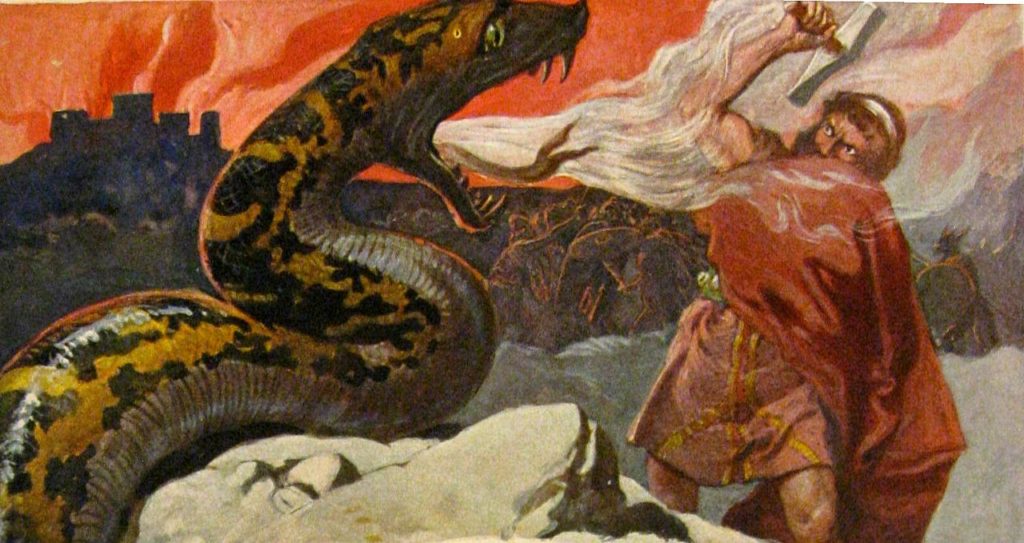Wednesday
It’s hard to figure out where the presidency of Donald Trump has done the most damage, from wholesale corruption to attacks on democracy itself. I suspect, however, that his failure to address the problem of climate change—indeed, he has been promoting the extraction and burning of fossil fuels—will have the longest lasting consequences. I found myself thinking of our climate future the other day while reading Neil Gaiman’s account of the Norse apocalypse in Norse Mythology.
Ragnarok, or “Fate of the Gods,” is how the Scandinavians once saw the world ending. It doesn’t entirely describe our own possible climate fate in that the Norse world gets colder. That being acknowledged, however, our extreme weather events swing both ways, with unusual cold snaps existing alongside melting ice caps. Ragnarok, in fact, features fire and rising oceans along with cold. To reference Robert Frost’s poem, the Norse world ends in both ice and fire.
In the myth, poison is unleashed as sea levels rise, bringing to mind oil spills and other lethal pollution:
There will be flooding too, as the seas rise and surge onto the land. Jormungundr, the Midgard serpent, huge and dangerous, will writhe in its fury, closer and closer to the land. The venom from its fangs will spill into the water, poisoning all the sea life. It will spatter its black poison into the air in a fine spray, killing all the seabirds that breathe it.
There will be no more life in the oceans, where the Midgard serpent writhes. The rotted corpses of fish and of whales, of seals and sea monsters, will wash in the waves.
Then, as the Negro spiritual quoted by James Baldwin puts it, “God gave Noah the rainbow sign/ No more water, the fire next time”:
The misty sky will split apart, with the sound of children screaming, and the sons of Muspell will ride down from the heavens, let by Surtr, the fire giant, holding high his sword, which burns so brightly no mortal can look upon it. They will ride across the rainbow bridge, across Bifrost, and the rainbow will crumble as they ride, its once-bright colors becoming shades of charcoal and of ash.
There will never be another rainbow.
Cliffs will crumble into the sea.
The fire giant, anticipating the forest fires of Australia and Caifornia, appears to have the last word:
Now Surtr, the burning giant, who was there before the beginning of all things, looks out at the vast plain of death and raises his bright sword to the heavens. There will be a sound like a thousand forest burning to flame, and the air itself will begin to burn.
The world will be cremated in Surtr’s flames. The flooding oceans steam. The last fires rage and flicker and then are extinguished. Black ash will fall from the sky like snow….
Soon after, the swollen ocean will swallow the ashes as it washes across all the land, and everything living will be forgotten under the sunless sky.
That is how the worlds will end, in ash and flood, in darkness and in ice. That is the final destiny of the gods.
As Pope observes, however, “hope springs eternal in the human breast.” Out of the ashes a new world will be born:
From the gray waters of the ocean, the green earth will arise once more.
The sun will have been eaten, but the sun’s daughter will shine in the place of her mother, and the new sun will shine even more brightly than the old, shine with young light and new.
The woman and the man, Life and Life’s Yearning, will come out from inside the ash tree that holds the worlds together. They will feed upon the dew on the green earth, and they will make love, and from their love will spring mankind.
So maybe humanity will bounce back, just as it will bounce back from four years under Trump. Better not to go there in the first place, however.


